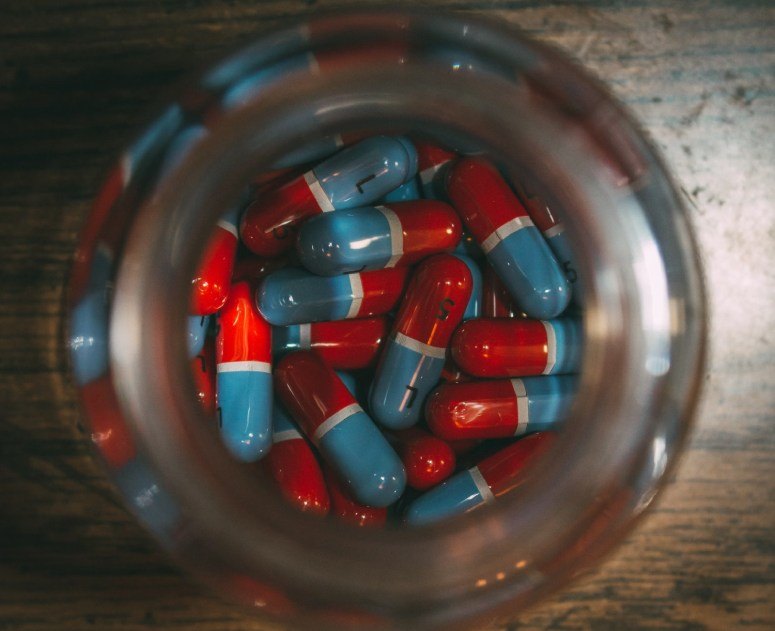Contents
Oral sex is a prevalent sexual activity – however, many individuals remain unaware of the associated risks, particularly in relation to sexually transmitted diseases (STDs).
This article examines the nature of oral sex, identifies the most common STDs, and evaluates the potential for transmission that may occur during oral sex. What are the odds of getting an STD after oral sex?
This is a key question addressed in the discussion, along with the signs and symptoms to monitor, preventive measures to implement, and guidance on steps to take if there is a suspicion of contracting an STD.
A comprehensive understanding of these factors is crucial for maintaining sexual health and promoting safe practices.
What is oral sex?
Oral sex is a sexual act that involves the use of the mouth to stimulate a partner’s genitals, encompassing various practices including oral-genital contact.
This form of sexual activity is prevalent across diverse demographics and sexual orientations – however, it carries specific health implications that require awareness and education.
Understanding the risks associated with the transmission of sexually transmitted diseases (STDs) during oral sex is crucial for maintaining sexual health and reducing infection rates.
By implementing appropriate preventive measures and fostering open communication about sexual history, individuals can engage in safer sexual practices while enjoying intimacy with their partners.
What are sexually transmitted diseases (STDs)?

Sexually transmitted diseases (STDs) are infections primarily transmitted through sexual contact, encompassing oral sex, anal sex, and vaginal intercourse.
Common STDs include herpes, gonorrhea, chlamydia, syphilis, HIV, and HPV, each presenting distinct health risks and epidemiological characteristics.
The prevalence of STDs may fluctuate based on demographic factors, sexual behaviors, and the level of awareness among sexually active individuals.
Public health initiatives are designed to educate the population on safe sex practices, encourage testing, and improve access to healthcare services, ultimately aiming to reduce the incidence and transmission of STDs within communities.
What are the most common STDs?
The most prevalent sexually transmitted diseases (STDs) include herpes, gonorrhea, chlamydia, syphilis, human immunodeficiency virus (HIV), and human papillomavirus (HPV).
Each of these infections has distinct transmission routes and implications for sexual health.
A comprehensive understanding of these infections, their symptoms, and their prevalence is essential for individuals to assess the risks associated with various sexual activities, including oral sex.
For instance, herpes can often be asymptomatic, while gonorrhea and chlamydia may present with mild symptoms that can lead to serious complications if left untreated.
Awareness of these common STDs and their effects on health outcomes is crucial for developing effective risk reduction and prevention strategies.
Herpes simplex virus (HSV) is transmitted through intimate skin-to-skin contact, resulting in painful sores and the potential for recurrent episodes.
Gonorrhea and chlamydia, both bacterial infections, primarily affect the reproductive tract but can also spread to other regions, leading to pelvic inflammatory disease or infertility if not addressed.
Syphilis progresses through distinct stages, initially manifesting as sores and potentially advancing to more severe systemic complications if untreated.
HIV, while manageable with appropriate medication, poses significant health risks by compromising the immune system.
The diverse strains of HPV underscore the necessity of vaccinations and regular screenings due to their association with cervical and other forms of cancer.
Therefore, enhancing health education regarding these infections and promoting preventive measures, such as the use of condoms and regular health check-ups, is vital in reducing transmission rates and improving overall sexual health.
Can you get an STD from oral sex?
It is indeed possible to contract a sexually transmitted disease (STD) through oral sex, as various infections can be transmitted via oral-genital contact, kissing, and other intimate behaviors.
Although the likelihood of transmission may differ when compared to vaginal or anal intercourse, it is crucial to acknowledge that engaging in oral sex still presents health risks, particularly if partners have undiagnosed infections.
Epidemiological studies indicate that certain infections, such as herpes and gonorrhea, can be transmitted through oral sex.
Therefore, it is essential to understand these risks and implement appropriate preventive measures to maintain sexual health and minimize the rate of infections.
What are the risks of getting an STD from oral sex?
The risks associated with acquiring a sexually transmitted disease (STD) through oral sex are influenced by various factors, including the presence of cuts or sores in the mouth, the specific sexual practices engaged in, and the overall health of both partners.
Certain infections, such as HIV, can be transmitted through oral sex – however, the transmission rates are generally lower compared to vaginal or anal intercourse.
Factors such as the presence of other sexually transmitted infections, open sores, and the immune status of individuals can increase the likelihood of transmission.
Therefore, comprehending these risks is essential for well-considered choices and effective sexual health management. An individual’s health status plays a significant role in how the body responds to potential infections.
Those with compromised immune systems, due to conditions such as HIV, diabetes, or the use of immunosuppressive therapies, may experience heightened risks.
Health literacy is also a critical factor influencing one’s ability to conduct effective risk assessments. Understanding the importance of regular STI screenings and employing barrier methods, such as condoms or dental dams, can significantly mitigate these risks.
Moreover, fostering open communication between partners regarding their sexual history and health status can enhance infection prevention strategies, thereby creating a safer sexual environment.
What are the factors that increase the risk of getting an STD from oral sex?
Several factors can elevate the risk of contracting a sexually transmitted disease (STD) from oral sex, including the number of sexual partners, the absence of condom use, and the engagement in high-risk sexual behaviors.
Individuals who have multiple sexual partners may be at a heightened risk for exposure to STDs, particularly if they do not practice safe sex methods such as utilizing dental dams or condoms during oral sex.
Additionally, individuals with a history of STDs or those who are asymptomatic may unknowingly transmit infections, underscoring the significance of partner screening and open communication regarding sexual health.
The importance of sexual history cannot be understated, as it plays a vital role in assessing an individual’s risk profile.
When individuals openly discuss their sexual experiences, they not only cultivate trust but also create a safer environment in which preventive measures can be discussed and effectively implemented.
Consent represents another essential component, as it ensures that both partners are aligned regarding their sexual health practices.
Engaging in sexual health education can provide individuals with the knowledge necessary to navigate these relationships responsibly, give the power toing them to make informed decisions that can significantly mitigate the risks associated with STDs during oral sex.
What are the signs and symptoms of STDs after oral sex?

Recognizing the signs and symptoms of sexually transmitted diseases (STDs) following oral sex is essential for early detection and treatment.
The common manifestations can vary significantly depending on the specific infection. Symptoms may include sores or lesions in the mouth or throat, painful urination, and unusual discharge.
In many instances, individuals may remain asymptomatic, highlighting the necessity for regular testing and awareness of one’s sexual health to effectively control infections.
The diversity of symptoms associated with STDs emphasizes the importance of understanding these conditions to mitigate health risks and promote sexual wellness among partners.
How soon can you see symptoms of an STD after oral sex?
The time frame in which symptoms of a sexually transmitted disease (STD) may manifest following oral sex varies considerably based on the specific infection and the individual’s immune response.
Some individuals may exhibit symptoms within days, while others may take weeks or even months.
For example, the incubation period for herpes can range from 2 to 12 days, whereas symptoms of gonorrhea may appear within a few days following exposure.
Understanding these time frames is essential for determining when to seek testing and medical advice, thereby highlighting the importance of awareness regarding one’s sexual health.
Being informed about these differences can significantly impact health outcomes and strategies for risk reduction. Timely testing not only aids in the management of one’s health but also plays a crucial role in preventing the transmission of infections to partners.
Public awareness regarding STDs and their potential symptoms is vital, as it encourages individuals to adopt proactive measures in their sexual health, leading to more well-considered choices, reduced stigma, and improved overall community health.
Education and open discussions about STDs are fundamental in give the power toing individuals to seek medical guidance at the earliest opportunity.
What are the signs of an STD in the mouth and throat?
Signs of a sexually transmitted disease (STD) in the oral cavity and pharynx may present as sores, lesions, painful swallowing, and persistent sore throat, which could indicate infections such as herpes or gonorrhea.
These symptoms can occasionally be mistaken for other medical conditions, highlighting the necessity of accurate diagnosis and testing. Maintaining good oral hygiene and being vigilant about changes in the oral environment can facilitate early detection.
Understanding these indicators is crucial for individuals to take appropriate action and seek medical consultation in a timely manner.
Plus the more commonly recognized symptoms, individuals may also experience unusual discharge, halitosis, or swollen lymph nodes, which can further complicate the clinical presentation.
It is vital for individuals to distinguish these signs from routine oral health issues such as periodontal disease or canker sores, as misinterpretation may result in delays in receiving the necessary treatment.
The significance of health literacy in this context is paramount – an informed individual is more likely to recognize the nuances of their symptoms and pursue professional assistance.
Regular dental check-ups and open discussions regarding sexual health can enhance understanding of one’s oral health and the potential risks associated with STDs.
What are the signs of an STD in the genital area?
Signs of a sexually transmitted disease (STD) in the genital area typically include unusual discharge, itching, burning sensations, and visible lesions or warts.
These symptoms may be indicative of infections such as chlamydia, gonorrhea, or human papillomavirus (HPV). Early recognition of these symptoms is crucial for effective treatment and for reducing the risk of transmission to partners.
It is important to note that some STDs may remain asymptomatic, underscoring the necessity for regular testing and open communication regarding sexual health with partners to facilitate well-considered choices.
Plus the common signs, symptoms can vary significantly among different infections. Some STDs may result in painful urination or swelling in the genital area.
Such symptoms can not only cause discomfort but may also signal a more serious underlying health issue.
It is essential for individuals experiencing these symptoms to seek medical evaluation promptly, as early intervention can lead to improved health outcomes and minimize potential complications.
Prevention strategies, including safe sex practices and comprehensive sexual health education, are pivotal in reducing the prevalence of STDs.
Engaging in open dialogues about sexual health give the power tos individuals to make informed choices, fostering a culture of awareness and responsibility within intimate relationships.
How can you prevent getting an STD from oral sex?
Preventing sexually transmitted diseases (STDs) resulting from oral sex necessitates the implementation of safe sex practices, such as the use of condoms or dental dams during oral-genital contact.
These measures can significantly reduce the risk of transmission. A comprehensive understanding of the various protective methods available is crucial for promoting sexual health and minimizing infection rates among partners.
Consistent and correct use of condoms, along with open discussions regarding sexual history and health status, constitutes essential elements of effective prevention strategies.
By prioritizing safe sexual practices, individuals can engage in intimacy while safeguarding their health.
What are the best practices for safe oral sex?
Best practices for engaging in oral sex safely include the use of barriers such as condoms or dental dams, maintaining good oral hygiene, and fostering open communication regarding sexual health with partners.
These practices not only enhance the safety of oral sex but also contribute to overall sexual wellness and the reduction of risks.
It is essential to understand the importance of consent and to establish mutual agreements about safe practices to promote healthy sexual relationships.
By implementing these strategies, individuals can significantly decrease their risk of sexually transmitted infections (STIs).
Creating an environment where both partners feel give the power toed to discuss their sexual history and any potential risks is crucial.
Health literacy is integral in enabling individuals to make informed decisions about their sexual health, thereby encouraging the adoption of preventive measures such as regular testing and vaccinations.
Numerous sexual health campaigns emphasize the importance of partner notification, urging individuals to inform previous partners if they test positive for an STI.
This proactive approach fosters transparency and enhances mutual accountability, establishing a more respectful and secure atmosphere for intimate relationships.
What are the recommended protection methods for oral sex?
Recommended protective methods for oral sex include the utilization of condoms during oral intercourse and dental dams for oral-vaginal or oral-anal contact.
These barriers serve as effective means of preventing the transmission of sexually transmitted diseases (STDs). By employing these protective measures, individuals can significantly reduce the risk of exposure to infections such as herpes, gonorrhea, and human papillomavirus (HPV).
Implementing these methods is essential for safeguarding the health of both partners and promoting safer sexual practices.
Educating oneself and others about these options give the power tos individuals to take control of their sexual health. By effectively communicating the importance of these protective measures, individuals can enhance their understanding of sexual health education.
Proper usage – ensuring that dental dams are intact and condoms are fitted securely – greatly contributes to their effectiveness. Integrating these methods into discussions about risk communication not only raises public awareness but also emphasizes the critical nature of prevention.
Ultimately, fostering an informed perspective on these protective strategies plays a crucial role in curbing the spread of STDs and encourages responsible and enjoyable sexual experiences.
What should you do if you think you have an STD from oral sex?

If there is a suspicion of having contracted a sexually transmitted disease (STD) from oral sex, it is imperative to seek medical advice promptly for appropriate testing and treatment.
Timely diagnosis can facilitate more effective treatment options and mitigate the risk of transmitting the infection to partners.
It is important to be prepared to discuss one’s sexual history candidly with the healthcare provider, as this information can assist in ensuring an accurate diagnosis and effective care.
Furthermore, notifying sexual partners is crucial for their health and plays a significant role in controlling the spread of communicable diseases.
When should you get tested for STDs after oral sex?
Testing for sexually transmitted diseases (STDs) following oral sex is essential, and the appropriate timeline for such testing may vary based on the specific infection and its incubation period.
Health professionals typically recommend undergoing testing a few weeks after potential exposure – however, certain STDs may require a longer duration before they can be accurately detected.
For instance, testing for HIV is generally advised at three months post-exposure to ensure conclusive results. Proactively seeking testing is vital for maintaining sexual health and mitigating the risks of further transmission.
Regular screening is crucial, even in the absence of visible symptoms, as many infections can remain asymptomatic for extended periods. Statistics indicate that approximately one in five individuals may be unaware of their STD status, highlighting the importance of routine testing.
Participating in regular testing not only facilitates early detection and effective treatment but also acts as a preventive measure against the potential spread of STDs.
Additionally, understanding the risk factors associated with specific sexual behaviors can further give the power to individuals to make informed decisions regarding their health and relationships.
What are the treatment options for STDs after oral sex?
Treatment options for sexually transmitted diseases (STDs) contracted through oral sex vary based on the specific infection.
Typically, these options include antibiotics for bacterial infections such as chlamydia and gonorrhea, as well as antiviral medications for viral infections like herpes and HIV.
It is essential to consult healthcare providers for accurate diagnosis and appropriate treatment, as they can customize interventions according to individual health needs and symptoms.
Understanding the available treatment modalities is crucial for individuals to effectively manage their sexual health and mitigate the risk of complications.
Seeking medical advice not only results in effective treatment but also promotes better health outcomes by facilitating proper infection control strategies.
Healthcare providers strongly emphasize the importance of adhering to prescribed treatment plans to prevent reinfection or further transmission of infections.
Ongoing medical research continues to enhance the understanding of these diseases, leading to more comprehensive care approaches.
Regular screenings and candid discussions about sexual health give the power to individuals to make informed decisions, ultimately reducing the prevalence of STDs and fostering overall community health.
How can you protect your partner from getting an STD from oral sex?
Protecting one’s partner from the risk of sexually transmitted diseases (STDs) resulting from oral sex necessitates a proactive approach that encompasses open communication regarding sexual health, the practice of safe sex, and regular testing.
It is crucial to engage in discussions about sexual history and any potential risks prior to initiating intimate contact, thereby ensuring that both partners are informed and consenting to protective measures.
The use of barriers such as condoms and dental dams during oral sex is essential in minimizing transmission risks, thereby fostering a safer sexual environment for both individuals.
Health education is instrumental in providing partners with the knowledge necessary to comprehend the significance of sexual wellness.
Engaging in risk communication allows both individuals to articulate their concerns and preferences, which further enhances trust within the relationship.
Moreover, effective partner notification is fundamental as it promotes the responsible sharing of health information.
Both partners should be well-informed about strategies for preventing STDs, including regular health check-ups and vaccinations, which can significantly mitigate risks and support a healthy sexual relationship.
By prioritizing these strategies, partners can establish a more secure and supportive environment for exploring their intimacy.
Find detailed answers about the risks of STDs from oral sex in the FAQ section lower on the page.
Step into the fascinating world of probabilities and exceptional events. Enrich your curiosity and knowledge by exploring our articles at WhatAreTheOddsOf.NET.



